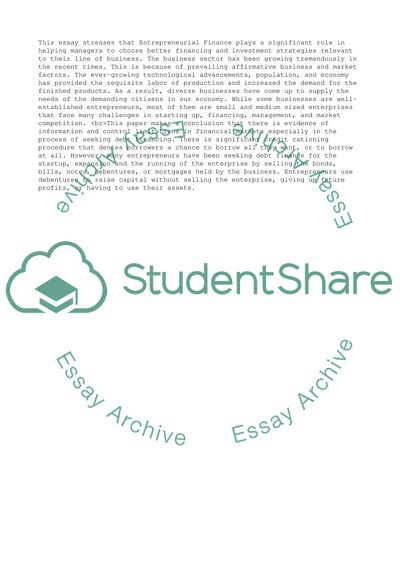Cite this document
(“Accessing External Finance for SMEs Essay Example | Topics and Well Written Essays - 2250 words”, n.d.)
Retrieved from https://studentshare.org/business/1590931-accessing-external-finance-for-smes
Retrieved from https://studentshare.org/business/1590931-accessing-external-finance-for-smes
(Accessing External Finance for SMEs Essay Example | Topics and Well Written Essays - 2250 Words)
https://studentshare.org/business/1590931-accessing-external-finance-for-smes.
https://studentshare.org/business/1590931-accessing-external-finance-for-smes.
“Accessing External Finance for SMEs Essay Example | Topics and Well Written Essays - 2250 Words”, n.d. https://studentshare.org/business/1590931-accessing-external-finance-for-smes.


